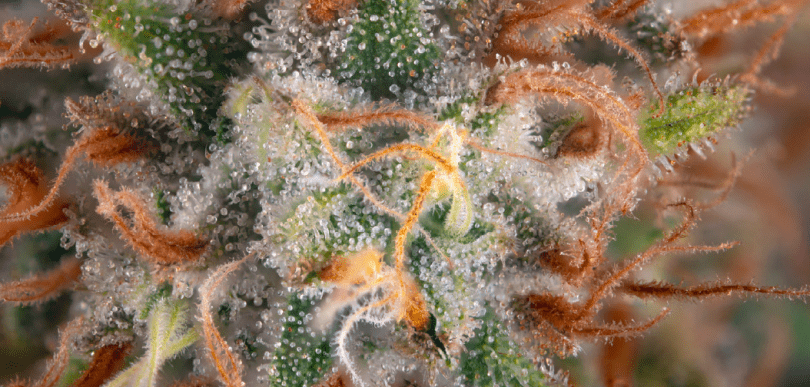Another Study Highlights the Prominence of the Terpenes
I needn’t belabor this. You know the drill. Cannabis cultivar names are bountiful but are predominantly meaningless and likely overkill when trying to relate chemical information. After all, a 2018 study showed that 396 differently named cultivars in Nevada could be classified as having just 3 unique chemistries. [1] Or, put another way, 3 chemistries were named 396 different things. While the names of some cultivars convey something about its terpene profile (e.g. Sour Diesel, Island Sweet Skunk, Lavender), I couldn’t predict what Obama or Bob Ross or Chernobyl smell like by their monikers.
Some people believe that they can intuitively measure a cultivar’s potency simply by sniffing its fragrance. [2] Potency, from a cannabinoid perspective, cannot be inhaled. Terpenes can be inhaled, however, and it’s the terpenes that have helped differentiate one cannabis cultivar from another. [3,4]
The scent of a cannabis cultivar is critical to its individualization. The terpene profile defines the plant. A 2019 study considered terpene metabolomics, the latter word relating to the study of small molecules commonly referred to as metabolites. [5] Terpenes are secondary metabolites in Cannabis sativa. Plant metabolomics, in the authors’ words, are used to “understand the underlying impacts of genetics, environment, or stressors.” This specific study evaluated how the breeding practice of attempting to gauge potency through scent may have altered terpene biosynthesis in a cultivar.
The study considered 33 chemovars generated by 5 Canadian licensed producers. Cannabinoids and terpenes were quantified using ultra-high-performance liquid chromatography with ultraviolet detection, and gas chromatography with mass spectrometric detection, respectively. A total of 67 terpenes were measured, 29 monoterpenes and 38 sesquiterpenes. The former dominated, comprising between 87.1 to 99.5% of the terpene profiles.
Limonene, β-myrcene, and α-pinene were dominant monoterpenes in most of the chemovars, while caryophyllene and humulene ranged from 0.2 to 5.5% and 0.3 to 1.5%, respectively. In other words, no big surprises.
The monoterpenes camphene and β-pinene were in every cultivar, just at lower concentrations. β-Cubebene was detected in every chemovar except low tetrahydrocannabinol (THC), high cannabidiol (CBD). All THC-dominant cultivars contained the sesquiterpenes caryophyllene oxide, germacrene B, two elemene isomers, and α-amorphene, to name five.
There were 18 terpenes common to high THC and “mid-level” THC/CBD cultivars, with terpinolene dominating the monoterpene portfolio. Terpinolene ranged from < 0.3% in 27 of the 33 chemovars, and 13.4 to 41.2% in 6 chemovars that possessed a distinct monoterpene profile including α-thujene, terpinen-4-ol, α- and β-phellandrene, and p-cymene. CBD-dominant cultivars garnished a different terpene profile which included guaiol, cis-β-ocimene, trans-β-ocimene, and sabinene.
The authors compiled aroma properties from published sources. The terpenes and their scents were classified into five groups: group 1 representing “major aromatics” common to all cultivars, and groups 2-5 representing “undertones” in the fragrance.
What does it all mean? The authors hypothesized that selective breeding practices that incorporated scent to bespeak potency “would result in a set of common scent tones characteristic of high-THC chemovars, and that the comprehensive and sensitive analysis of terpene profiles in Cannabis chemovars could then provide new insights into the impact of the domestication on Cannabis.” [5]
THC-rich cultivars predominantly were more floral and herbal and had higher incidence of specific sesquiterpenes, one of which, caryophyllene oxide, is the terpene that drug-sniffing dogs specifically target. Interestingly, the CBD-rich cultivars were citrusy and tropical. Bisabolene was also detected in CBD-rich cultivars, and this terpene is known for its anti-convulsive properties [6]. The authors point to this correlation, and the fact that CBD is already a proven anti-epileptic, further highlighting the importance of ensemble effects. [5]
These authors had previously hypothesized [7] “that the variability in the chemotaxonomy arises from domestication syndrome in the Cannabis genome” which could result in “a loss of phytochemical diversity, as breeders emphasized aromas and pharmacological activity.” [5] A loss of terpenes critical to plant health through selective breeding for organoleptic properties may be responsible for decreasing pest resistance or other techniques plants use for survival.
I’ve said it before, and I’ll keep beating the drum. Terpenes aren’t just cannabinoid sidekicks. And they’re not solely integral to a plant’s health. No — our own health can be impacted and augmented though the use of these fragrant little plant defenders. God, I love terpenes.
References
- Reimann-Philipp, U. et al. “Cannabis Chemovar Nomenclature Misrepresents Chemical and Genetic Diversity; Survey of Variations in Chemical Profiles and Genetic Markers in Nevada Medical Cannabis Samples.” Cannabis and Cannabinoid Research, 2019, open access. [journal impact factor = NA; cited by 2]
- Gilbert, A. and DiVerdi, J. “Consumer Perceptions of Strain Differences in Cannabis Aroma.” PLoS ONE, vol. 13, no.2, 2018, p. e0192247. [journal impact factor = 2.776; cited by 5]
- Orser, C. et al. “Terpenoid Chemoprofiles Distinguish Drug-type Cannabis sativa L. Cultivars in Nevada.” Nat Prod Chem Res, vol. 6, 2018, p. 304. [journal impact factor = 1.71; cited by 5]
- Hazekamp, A. & Fischedick, J. “Cannabis – From Cultivar to Chemovar.” Drug Test Anal, vol. 4(7-8), 2012, p. 660-667. [journal impact factor = 2.799; cited by 67]
- Mudge, E. et al. “The Terroir of Cannabis: Terpene Metabolomics as a Tool to Understand Cannabis sativa Selections.” Planta Med, vol. 85, 2019, p. 781–796. [journal impact factor = 2.74; cited by 2]
- Orellana-Paucar, A. et al “Anticonvulsant Activity of Bisabolene Sesquiterpenoids of Curcuma longa in Zebrafish and Mouse Seizure Models.” Epilepsy Behav, vol. 24, 2012, p. 14–22 [journal impact factor = 2.378; cited by 53]
- Mudge EM, Murch SJ, Brown PN. “Chemometric Analysis of Cannabinoids: Chemotaxonomy and Domestication Syndrome.” Sci Rep, vol. 8, 2018, p. 13090 [journal impact factor = 4.011; cited by 1]








